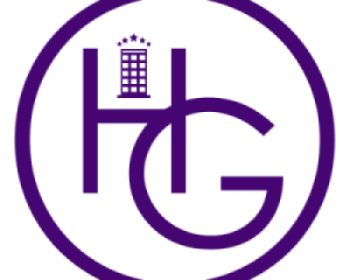The Seventh Inning Begins
Baseball is a great game. Even if you do not play it, you can watch it or use it as a metaphor to depict where we are in the economic cycle. We have completed the sixth inning of this ball game. The “Great Recession” followed by the “Great Hangover” ended last year and there is some degree of certainty ahead. Occupancy and rate growth levels have both moved steadily upward on the hotel side. Meetings business is starting to see daylight and attractions are reporting positive year over year growth.
The tourism industry continues to show signs of growth relative to increased corporate demand, resulting in improved hotel occupancy and steady leisure demand which has firmed up rates. Average price increases were over 5 percent in primary markets in the United States in 2014 and according to our analysis, rates will grow at or beyond that level in 2015.
Group, leisure and corporate demand for lodging is coming together at the same time driving rates up markedly while new supply has been slow to enter the equation. This combination will allow for the highest occupancy levels in decades and with average rates rising above the cost of living, net income will grow by double digits over the next two years.
According to Patrick Ford of Lodging Econometrics, “favorable economic conditions, record-setting operating metrics, and a positive outlook for the next few years have combined to make this an opportune time for hotel developers.” At the end of Q3 2014, there were 3,516 projects and 443,936 rooms in the development pipeline. By our estimate, that would represent an increase in room supply of about 8 percent, all of which can be absorbed by our current demand growth.
The U.S. lodging industry is in a very unique period of time where the market is favorable for acquisitions, dispositions and development of hotels in the U.S. The U.S. economy finally seems to be firing on all cylinders with much stronger consumer confidence, employment and housing numbers. “Developing middle classes throughout the globe are creating new travelers that want to explore and see the world, in particular the Unites States of America,” according to Dan Lesser, one of the leading appraisal experts in the industry. Additionally, says Lesser, “foreigners perceive the U.S. as the gold standard destination for investing and preserving capital.”
Buy or Sell
Does this mean it is a good time to buy? Is it a good time to sell? That depends on your perspective. It will be a good time to buy hotels in 2015 in markets that recovered more slowly due to over supply. 2014 saw strong increases in occupancy rates and average rate growth above the rate of inflation. Once occupancy levels increase, room rate growth grows naturally. The window for an upside is closing as we are now entering the seventh inning, but there remain opportunities if you know where to look!
Host Hotels and Resorts noted last month that this late in the cycle, capital is coming in and bidding up asset values. Their concern is that the cycle is in the later stages. We certainly agree that we are past the sixth inning but we believe that we have at least two years of powerful growth ahead.
With crude oil prices falling more than 35 percent since the summer of 2014, Tourism Economics (TE) is forecasting what the effects will be on the U.S. economy. Using their Global Economic Model they estimate that a $30 per barrel drop in crude oil prices boosts real GDP growth by around 0.6 percentage points.
The savings to consumers represents the equivalent of a stimulus of $62 billion annually or a 0.5 percent boost to disposable income which should translate into increased consumer spending. The negative here is the impact on communities that have exploded with the growth from hydraulic fracturing (“fracking”) and other domestic sources of oil.
Supply growth has been 2 percent on average for the last 20 years. Typically, revenue per available room (RevPAR) growth spurs additional supply to the point that RevPAR is pressured. Supply growth is up to 1.6 percent next year, still below the 2 percent average but “RevPAR growth peaked in Q3, so we see a slower rate of RevPAR growth in 2015,” according to UBS.
Valuations are the biggest concern that investors have at this point in the lodging cycle. Do we hold the hotel asset until clear signs of a cycle ends? If so, we maximize cash returns but sacrifice asset pricing. The market rewards those who can time it so that it appears that you are leaving meat on the bone for the buyer but in actuality you have optimized the disposition by pulling out great cash returns and hitting the peak of the asset pricing market. Capitalization rates are forecast to be stable but if you want to be safe, do not assume this. They may creep up just as interest rates do in the second half of 2015.
Bottom Line
Is this is the time to sell? The answer is yes, if you want to cash out, and no if you are enjoying success and cash flow. Markets like the Phoenix metropolitan area and the Palm Springs market area have very weak occupancy levels now but are coming back. East coast and west coast markets will perform well over the long haul and notwithstanding the possibility of an economic “event,” the market will be very strong for the next two years and interest rates are fantastic!
Sure there are the typical caveats of “economic or global event” or huge increases in costs from Obamacare or labor increases but right now, I suggest investors should be “all in” the hotel industry. Those who are ready to exit will get good prices because the future is bright but that window will close as we exit the seventh inning later this year and go to the bullpen to get the closer!
Robert A. Rauch, CHA





